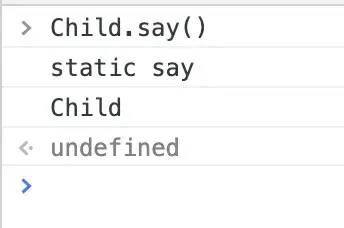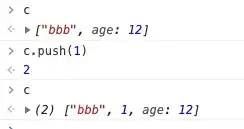使用ES5实现ES6的Class
关注公众号 前端开发博客,回复“加群”
加入我们一起学习,天天进步
作者:happy137
https://juejin.im/post/6844903886034042893
ES5的寄生组合式继承
function parent (age) {
this.age = age
}
parent.prototype.say = function () {
console.log(this.age)
}
function sub (age, value) {
parent.call(this, age)
this.value = value
}
sub.prototype = Object.create(parent.prototype, {
constructor: {
value: sub,
enumerable: false,
writable: true,
configurable: true
}
})
ES6的Class
关于Class的语法推荐看这里:es6.ruanyifeng.com/#docs/class
ES6 的class可以看作只是一个语法糖,它的绝大部分功能,ES5 都可以做到,新的class写法只是让对象原型的写法更加清晰、更像面向对象编程的语法而已。但是它们还是有区别的。
区别:
类必须使用new调用,否则会报错。ES的构造函数是可以当成普通函数使用的
类的内部所有定义的方法,都是不可枚举的。(包括内部定义的静态方法)
类的静态方法也可以被子类继承
可以继承原生构造函数
-
ES5 是先新建子类的实例对象this,再将父类的属性添加到子类上,由于父类的内部属性无法获取,导致无法继承原生的构造函数。
ES6 允许继承原生构造函数定义子类,因为 ES6 是先新建父类的实例对象this,然后再用子类的构造函数修饰this,使得父类的所有行为都可以继承
使用ES5模拟实现ES6的class
根据上面的区别,我们一步步的看。
1. new操作符检查函数
解决问题:
类必须使用new调用,否则会报错。ES的构造函数是可以当成普通函数使用的
function _checkType (obj, constructor) {
if (!(obj instanceof constructor)) {
throw new TypeError('Cannot call a class as a function')
}
}
2. 内部方法不可枚举
解决问题:
类的内部所有定义的方法,都是不可枚举的。(包括内部定义的静态方法)
// 修改构造函数描述符
function defineProperties (target, descriptors) {
for (let descriptor of descriptors) {
descriptor.enumerable = descriptor.enumerable || false
descriptor.configurable = true
if ('value' in descriptor) {
descriptor.writable = true
}
Object.defineProperty(target, descriptor.key, descriptor)
}
}
// 构造class
// constructor 表示类对应的constructor对象
// protoDesc 表示class内部定义的方法
// staticDesc 表示class内部定义的静态方法
function _createClass (constructor, protoDesc, staticDesc) {
protoDesc && defineProperties(constructor.prototype, protoDesc)
staticDesc && defineProperties(constructor, staticDesc)
return constructor
}
3. 真正的创建class
const Foo = function () {
function Foo(name) {
_checkType(this, Foo) // 先检查是不是new调用的
this.name = name
}
_createClass (Foo, [ // 表示在class内部定义的方法
{
key: 'say',
value: function () {
console.log(this.name)
}
}
], [ // 表示在class内部定义的静态方法
{
key: 'say',
value: function () {
console.log('static say')
console.log(this.name)
}
}
])
return Foo
}()
到这里class实现完成,验证一下。
先直接调用一下Foo(),结果为:

使用new操作符,生成一个对象
const foo = new Foo('aaa')

打印一下在原型链上定义的方法

可见say方法是不可枚举的。
打印一下静态方法

可见静态方法say是不可枚举的。
4. 实现原型链继承和静态方法继承,并考虑到可以继承null的情况
解决问题:
类的静态方法也可以被子类继承
function _inherits(subClass, superClass) {
if (typeof superClass !== 'function' && superClass !== null) {
throw new TypeError('Super expression must either be null or a function, not' + typeof superClass)
}
subClass.prototype = Object.create(superClass && superClass.prototype, {
constructor: {
value: subClass,
enumerable: false,
writable: true,
configurable: true
}
})
if (superClass) {
Object.setPrototypeOf ? Object.setPrototypeOf(subClass, superClass) : subClass.__proto__ = superClass
}
}
5. 使用父类的实例对象this
解决的问题:
可以继承原生构造函数
-
ES5 是先新建子类的实例对象this,再将父类的属性添加到子类上,由于父类的内部属性无法获取,导致无法继承原生的构造函数。
ES6 允许继承原生构造函数定义子类,因为 ES6 是先新建父类的实例对象this,然后再用子类的构造函数修饰this,使得父类的所有行为都可以继承
// 返回父类的this;若为null,则返回自身
function _possibleConstructorReturn(self, call) {
if (!self) {
throw new ReferenceError("this hasn't been initialised - super() hasn't been called")
}
return call && (typeof call === 'object' || typeof call === 'function') ? call : self
}
6. 创建子类class
const Child = function (_Parent) {
_inherits(Child, _Parent) // 继承父类原型上的属性及静态方法的继承
function Child(name, age) {
_checkType(this, Child)
// 先使用父类实例对象this,再返回
const _this = _possibleConstructorReturn(this, (Child.__proto__ || Object.getPrototypeOf(Child)).call(this, name))
_this.age = age
return _this
}
return Child
}(Foo)
子类class实现完成。验证一下。
打印一下Child.say()

Child并没有在自身定义静态方法,但是它的父类有定义。继承成功。
构造一个继承原生构造函数的子类
const Child = function (_Parent) {
_inherits(Child, _Parent)
function Child(name, age) {
_checkType(this, Child)
const _this = _possibleConstructorReturn(this, (Child.__proto__ || Object.getPrototypeOf(Child)).call(this, name))
_this.age = age
return _this
}
return Child
}(Array)
const c = new Child('bbb', 12)

继承成功。
相关文章
ES2020 中 Javascript 10 个你应该知道的新功能
重温ES6核心概念和基本用法
JavaScript 对象:我们真的需要模拟类吗?
最后
关注公众号:前端开发博客,回复 1024,领取前端进阶资料
![]()
“在看”吗?在看就点一下吧